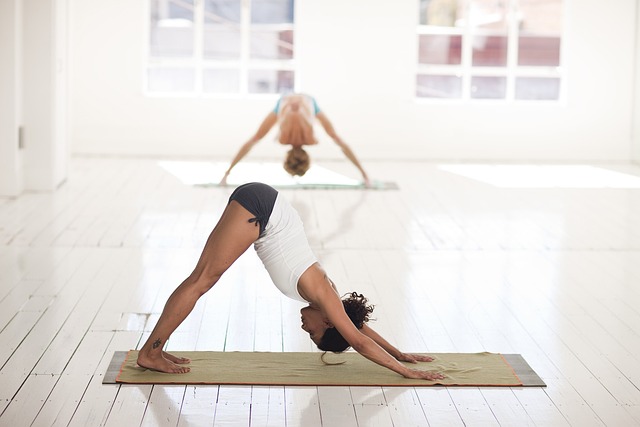Calisthenics is a form of exercise that utilizes the body’s own weight for resistance, rather than relying on equipment or weights. This makes it a versatile and accessible form of exercise for people of all fitness levels and abilities.
Mobility is an essential aspect of calisthenics as it allows for optimal movement patterns and proper form during exercises. It helps reduce the risk of injury and enhances overall performance by increasing flexibility, range of motion, and stability.
The purpose of this article is to provide a beginner-friendly mobility routine for those interested in calisthenics. The routine will focus on improving mobility and flexibility, preparing the body for exercises, and reducing the risk of injury. Whether you’re just starting out or looking to enhance your current calisthenics practice, this routine will provide a comprehensive approach to improving your mobility.
What is Mobility?
Mobility refers to the ability to move freely and easily through a full range of motion in joints and muscles. It is an essential component of overall physical fitness and is critical for maintaining healthy and functional movement patterns.
Good mobility has several benefits including reduced risk of injury, improved posture, increased flexibility, and enhanced athletic performance. Additionally, it can also help reduce pain and discomfort in joints, improve balance and stability, and increase joint health and longevity.
Mobility is especially important in calisthenics as it allows for proper form and execution of exercises. Good mobility allows the body to move through the full range of motion required for exercises, reducing the risk of injury and enhancing performance. It also helps to improve stability and balance during exercises, which is essential for progress and success in calisthenics. Overall, mobility plays a crucial role in the effectiveness and enjoyment of calisthenics, making it an important aspect of any calisthenics practice.
Warm-up
proper warm-up routine is essential for preparing the body for a workout and reducing the risk of injury. It increases blood flow to the muscles, raises body temperature, and activates the nervous system, allowing the body to perform at its best.
Dynamic stretching exercises, such as high knees, lunge walks, and arm swings, are a great way to warm up before a calisthenics workout. These exercises help to increase range of motion and flexibility, preparing the body for the movements involved in calisthenics exercises.
To properly warm-up before a calisthenics workout, it is recommended to spend 5-10 minutes performing dynamic stretching exercises, gradually increasing the intensity and complexity of movements as the body becomes more warmed up. It is also important to hydrate adequately before a workout and to listen to your body, avoiding any movements that cause pain or discomfort. Following a structured warm-up routine before each workout will help to ensure that the body is prepared for the demands of calisthenics and will lead to better performance and a reduced risk of injury.
Beginner calisthenics mobility routine
The following exercises are included in this beginner calisthenics mobility routine:
- Cat-cow stretch: A dynamic stretch for the spine, neck, and hips.
- Shoulder rolls: A warm-up exercise for the shoulders, improving mobility in the joint.
- Arm circles: A warm-up exercise for the shoulders and upper back, promoting mobility in the joint and surrounding muscles.
- Leg swings: A dynamic stretch for the hips, hamstrings, and groin.
- Squat hold: A static stretch for the hips, knees, and ankles, improving mobility in these joints.
- Hamstring stretch: A static stretch for the hamstrings and lower back.
- Child’s pose: A stretching exercise for the hips, back, and arms, promoting overall body mobility.
For each exercise, it is recommended to perform 10 repetitions, 3 sets, holding each stretch for 10-15 seconds. It is important to focus on proper form and technique, avoiding any movements that cause pain or discomfort.
As mobility improves, the difficulty of the routine can be increased by increasing the number of repetitions and sets, holding stretches for a longer duration, or incorporating more challenging stretches and exercises. It is important to listen to your body and progress at a comfortable pace, avoiding any movements that cause pain or discomfort. Regularly incorporating this routine into your calisthenics practice will lead to improved mobility, reduced risk of injury, and enhanced performance.
Final thoughts
Mobility is a critical aspect of calisthenics, allowing for proper form and execution of exercises, reducing the risk of injury, and enhancing overall performance. A structured mobility routine, such as the one outlined in this article, can greatly improve mobility and prepare the body for the demands of calisthenics.
We encourage you to integrate this beginner calisthenics mobility routine into your regular practice to see the benefits for yourself. Consistency is key, and making mobility a regular part of your calisthenics routine will lead to long-term improvements in mobility, flexibility, and performance.
Incorporating a mobility routine into your calisthenics practice is a simple and effective way to enhance your overall fitness and reduce the risk of injury. Remember to listen to your body, progress at a comfortable pace, and focus on proper form and technique during each exercise. With dedication and consistency, this beginner calisthenics mobility routine will help you achieve your fitness goals and take your calisthenics practice to the next level.






